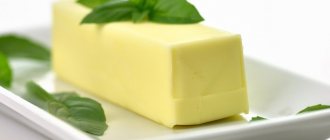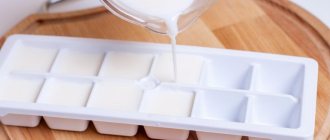Everyone knows the saying “water is the basis of life.” It is especially relevant in our time, when tap water for drinking and domestic needs must be further purified. Some people install filtration systems in their homes, others buy purified water in special plastic bottles. This raises the question, how long can you store water in plastic, and is it possible at all?
Despite the fact that tap water undergoes multi-level purification using a variety of filters and chemicals, its quality and taste are far from the required standards.
Even after standing for a long time, tap water changes color, a green or rusty sediment and an unpleasant odor appear in it. Drinking such water is extremely dangerous.
We are preparing an emergency supply of drinking water in case of emergencies.
In recent years, you can see how the number of natural disasters - tornadoes, droughts or floods - has increased. Now they can appear in different parts of the planet. Imagine that a severe storm and an earthquake hit the locality where you live at the same time. In Oklahoma, this situation was dubbed the term “Quackenado” - when an earthquake coincides in time with a tornado.
Even if your home is not damaged, there is a high probability that your home will be without electricity and water. You will hear news that the power grid has been damaged throughout the area and the water supply is down. You will be advised that it will take services at least a week to fully restore the water supply system in the city. How much water do you have left in your home? Will it be enough to last you and your family until clean water flows through the pipes again? How much water will be enough to survive these days? All questions will be answered by the material on the Art for manliness resource.
What plastic containers are suitable?
When creating a container, materials intended for storing food products should be used. The PET symbol is placed on the label. This means that the container is based on a material (polyethylene terephthalate) that does not harm human health and does not release foreign substances upon contact with water. If the bottle is marked PVC, storing liquid in it is prohibited. The material from which they are prepared has toxic properties. It is also prohibited to store water in a bottle that contains melamine.
There are times when there are no markings on the label and it does not say what material was used, there is a way to check this. Press down on the bottle with your fingernail. A mark will remain on the container made of PVC material, but the container containing PET will not be damaged. A container containing melamine can be identified by its sound. You need to knock on it. If the sound is dull, then the container cannot contain liquid.
How much water does one person need per day?
outdoorrevival.com
Practice shows (and there is a general norm): one gallon of water is needed per day for one person (US gallon - 3.7 liters), that is, approximately 4 liters of water. Of this volume, half will be used for drinking, the second half is necessary to maintain hygiene. A number of factors indicate that this amount of water should be increased. If your locality is located in a hot climate zone or there are pregnant women or nursing mothers in the family or survival group, then you will have to stock up on a large amount of water.
So, we accept the general rule of four liters per day per person. The next question is natural: how many days should you prepare a supply of water? This will depend on your preparedness for a possible disaster of varying degrees of complexity. The US Federal Emergency Management Agency (FEMA) recommends that you have enough water to last three days for everyone in the house if the water source you usually use fails. Three days is a period sufficient to survive a period of lack of water or its pollution, if this occurs during a natural disaster - earthquakes, tornadoes, snowstorms.
Three days is just a starting point, as even in mild disasters, access to water may not be possible for much longer. On prepper forums and blogs, people have come to a general consensus that in the event of a disaster, it is advisable to have a supply of water on hand that will last at least two weeks. For one person, that's 14 gallons of water (or 56 L). If there are four people in a family, this means that you will need to store 56 gallons (220 L) of water.
You may wish to exceed this two-week minimum - the decision is yours. For the vast majority of people, finding a place in their own home or apartment to store such a volume of water for two weeks is an impossible task. And finding a place where you can store a supply of water for a month is beyond reality.
But even if having space for such a volume is not a problem for you, the financial investment in long-term storage of drinking water may turn out to be prohibitively high. We would recommend starting with storing a two-week supply of drinking water and gradually increasing the amount as you have additional space and money.
Landing basins
Rain-fed agriculture accounts for 80% of global agriculture. Many of the world's 852 million poor people live in parts of Asia and Africa that rely on rainfall to grow crops. food crops. As the world's population swells, more food will be needed, but climate variability could make farming difficult. A range of water supplies can help farmers overcome dry spells that would otherwise ruin their crops. Field studies have shown the effectiveness of small reservoirs. For example, the use of small planting basins to collect water in Zimbabwe has been shown to increase maize yields, regardless of whether rainfall is high or low. In Niger, they increased millet yields by 3–4 times.[11]
Nyalual Dan Joak carries a bucket distribution to his community. In addition to building toilets and running health campaigns, Oxfam provides essential materials such as buckets, soap and mosquito nets to help people store water safely and protect family members from deadly diseases.
Long-term water storage solutions
Well, having realized the seriousness of a possible water supply disaster, you decided to install your own emergency water supply. First of all, you will need a way to store the water - it must be a safe container. It is worth following the general rule - use plastic bottles only for food products. You can find a sufficient number of glass bottles and use them, but only if they were not used for non-food products.
Another option is stainless steel containers, but in such containers it will not be possible to treat water with chlorine, because chlorine will cause corrosion of the steel. Regardless of how you store your water, you should make sure it can be sealed tightly. Otherwise, bacteria and particles will contaminate your drinking water, ruining your efforts. Next, we will indicate several options on how you can save water.
What is a spring
This is when groundwater comes to the earth's surface naturally.
Why is this happening ? There are many reasons and they are all completely different.
But in most cases, this phenomenon is caused by the terrain and displacements that occur in various layers of the earth's surface.
It is for this reason that it often happens that a source that suddenly appears, after a while, can also suddenly disappear.
The temperature of the liquid that comes out of the bowels of the earth is different:
- Ice water gushes out of some springs,
- of others - hot.
Do you know about a thermostat for a heating radiator? For a technical description of a simple but effective device for normalizing comfortable room temperatures, read this useful article.
The pros and cons of a sewer aerator are described here.
There are some rules that must be followed when choosing a drinking source.
The water is much better from a spring that is located on rocky ground.
Good water flows from clay soils that do not have any impurities of salts and silt.
Life-giving moisture has excellent qualities if the spring comes out of the ground in an open, sunny place.
Ways to store a two-week supply of water
Bottled water from the store. The easiest (but also more expensive) way to stock up on the required amount of water is to simply buy water packaged in plastic bottles. This water is guaranteed to be clean, well sealed and supplied to retail chains in food-grade plastic bottles of various sizes. In addition, bottled water is very convenient to carry and store, which will be indispensable when you need to take it out and distribute it. If your house or apartment is small and there is little space for storage, then an excellent solution would be to buy several packs of water and store them under the beds.
Empty plastic water bottles (soda, juice, beer, etc.). If you cannot or do not want to spend money on purchasing packages of store-bought water, then you can always simply refill empty bottles of drinks with regular tap water. First, collect the required quantity of empty bottles and then stock up on drinking water - just remember to wash the container very thoroughly first to prevent contamination of the water.
5-7 gallon (20-25 L) water cans. A couple of such voluminous canisters may already be in your garage if you go out into nature as a tourist. They are made from durable food-grade plastic, which is painted dark blue. Thanks to this color, sunlight access to the water is limited, which prevents algae from growing in the water. These rectangular canisters are easy to stack, making them easy to store even in a cramped garage or small apartment. In addition, the small size makes it easy to transport water supplies if you decide to leave your home and move to another location.
How to choose the right tank
Water tanks can be made of different materials. When choosing a suitable container, you should consider the following tips:
- Location. Before purchasing a water container, you need to decide on the place where the product will stand. For small spaces, small narrow containers are suitable. For private homes, you can use any containers. Most often, such products are placed in the basement or veranda.
- Availability of a cover. To prevent the liquid from becoming contaminated, it is important that the structure closes tightly. Most models are equipped with a special cover that is easy to remove.
- Pens. In order to carry containers, you must use special handles. This is especially important for roomy models.
- Wall thickness. For indoor conditions, simple plastic models can be used. In order to store liquids outdoors, you need to choose products with thick walls. Such containers do not transmit ultraviolet radiation and do not collapse under the influence of precipitation.
- Drain tap. The presence of a special tap for draining makes the process of use easier. If there is no such tap, you need to pay attention to models with a wide neck.
Also, when purchasing, you need to choose models that are made of material that is safe for humans.
Methods for storing water supplies for a month or more
Have you read the post-apocalyptic novel “The Road”? There is a scene when the main character saw flashes in the window and realized that an apocalypse was approaching the world. What was the first thing he did? He began to fill his bathtub with water because he was sure that the city water supply would soon be cut off. His goal was to conserve as much water as possible while it was still flowing from the tap. If you completely fill the bathtub, you can store 100 gallons of water, or 370 liters (large bathtubs in the USA), we will be able to stock up on 160 or 210 liters of water.
But will this water be suitable for drinking, and how long will it last without contamination? Remember how many days have passed since you cleaned your bathtub?
Okay, let's say you recently washed it, but you definitely used harsh chemicals - that's why storing water in the bathtub is not very hygienic. Would you like to drink water straight from the bath? Next, the water poured into the bathtub is usually not covered with anything, and over time it will be subject to all sorts of contamination.
WaterBOB device specifically for bathtubs in emergency situations
A special WaterBOB system has been developed just for such force majeure situations. It is a large, durable polyethylene bag that holds up to 370 liters of water (100 gallons). Two holes with covers allow you to connect it to a tap and draw water and then use a pump to collect the required amount of water for use. Using the WaterBOB tank is very simple - place it in the bathtub and turn on the water. And voila! – you are provided with reliable storage of water for drinking and domestic needs for 12 weeks.
This is a good solution for regions where water outages occur frequently, and for those people whose living space is limited. The reservoir is disposable, so you can use water from it when you think you don't need a supply. But you may not have time to fill it with water if necessary if you think that you don’t need to use it at the moment.
Water barrels. If you have enough space in your home to accommodate large items and you want to have a month's supply of water, then you will most likely choose 55 gallon (203 L) water drums. They are made from strong food grade plastic. There are a pair of plugs on the lids of the barrels that are screwed tightly, which protects the water from contamination. The plastic is BPA free and UV resistant. Just two of these “babies” will provide the average family of four people with drinking water for 27 days.
But in such a container you can find several disadvantages. First, if you live in an apartment, there may not be enough space for a large 55-gallon drum. Secondly, it’s a matter of the price of water. In addition to water, you will also need to purchase a pump and a hose specifically for drinking water to fill the barrel. Thirdly, these containers are difficult to move. A fully filled barrel will weigh about 440 pounds (176 kg). You'll likely want to store your water in a more transportable container, since you may need to haul your supply out of the house.
If your goal is to store more than a month's worth of water, consider purchasing one or even more 320-gallon (1,187 L) water storage systems.
How to Store Water in 55-Gallon (Just Over 200 L) Drums (Figure)
There are 55-gallon drums filled with drinking water in the garage.
Barrels of water are placed on a wooden pallet to prevent chemical reactions between the containers and the cement floor.
To fill barrels with water, it is recommended not to use a regular old garden hose; it is better to take a special hose designed for drinking water.
The barrels in the garage are filled with water. Water disinfection companies recommend treating the container with chlorine before storage - this will prevent the growth of algae and bacteria. But other experts say this is not necessary because tap water has already been treated with chlorine.
When the barrels are full, tighten the cap tightly on the canister body. After all, water itself does not deteriorate; the cause of its deterioration is pollution.
You may have very large barrels with a supply of water, but make sure you have smaller canisters as well. This will allow you to take water with you if you have to leave the house.
Rain barrels. They can be used as an addition to your tap water storage system. All you need to do is place a rain barrel under the downspout (if you have a house and a downspout). And then, as soon as it rains, water will flow into the barrel. Rainwater is considered environmentally friendly, and collecting water this way is the cheapest way to create a long-term supply.
The thesis about the purity of rainwater is quite controversial in our time, especially if it is in an open barrel. Therefore, rainwater must be filtered and disinfected before drinking. There are “survivalists” who use rainwater for hygiene, and collect water from the tap for drinking. In the US, some states with frequent droughts require rainwater harvesting permits. For example, Texas provides a tax credit for the purchase of rainwater harvesting equipment.
Water tanks. Compared to rain barrels, cisterns are a significant improvement. At their core, they are giant containers for collecting and storing rainwater. Such tanks can hold from 1,400 (5,180 L) to 12,000 gallons (44,400 L) of water. Those who are seriously confident that the world will end soon can successfully use water collection tanks. You will need to find a place where you can place a huge tank, then develop a pipe system so that rainwater gets into the tank. It is worth keeping in mind that the tanks are not suitable for food products. It is necessary to purify the water before drinking it or use the water from the tank for other purposes first.
Recommendations
- Lambin, Eric F.; Tran, Anneliese; Vanwambeke, Sophie O.; Linard, Catherine; Soti, Valerie (2010). "Pathogenic landscapes: interactions between land, people, disease vectors and their animal hosts." International Journal of Health Geography
.
9
: 54. Doi:10.1186/1476-072X-9-54. PMC 2984574. PMID 20979609. - ^ a b c
“Groundwater” (PDF). EPA.gov. - Finding ways to increase productivity and reduce poverty through better water management in Africa
Success Stories, Issue 4, 2010, IWMI. - Wetlands and Poverty Reduction Project
, Wetlands International, 12-2005. - “Why are wetlands so important?” EPA.gov.
- Alemayehu, T.; Ye-Ebiyo, Y.; Ghebreyesus, T. A.; Witten, K. H.; Bosman, A.; Teklehaimanot, A. (1998). "Malaria, schistosomiasis and intestinal helminths in association with microdams in Tigray, northern Ethiopia." Parasitology
.
40
(3): 259–67. PMID 10376281. - “Statement of the Facts on Detention Pond Management Practices” (PDF). Dauphin County Preserve.
- “Best Stormwater Management Practices” (PDF). Laramie County Wildlife Refuge.
- McCartney, M., Smakhtin, V. Blue paper.
Water storage in an era of climate change: addressing increasing precipitation variability , IWMI - ^ a b
"Dams and reservoirs". MIT Water for everyone. - Diverse water sources for food security: report
, Reuters, September 5, 2010. - ^ a bc Pickering
, Amy J.;
Davis, Jennifer; Walters, Sarah P.; Horak, Helena M.; Keymer, Daniel P.; Mushy, Douglas; Strickfaden, Rachelle; Chynoweth, Joshua S.; Liu, Jesse (05/01/2010). "Hands, Water and Health: Fecal Pollution in Tanzanian Communities with Improved Off-Grid Water Sources." Environmental Science and Technology
.
44
(9):3267–3272. Bibcode:2010EnST...44.3267P. Doi:10.1021/es903524m. ISSN 0013-936X. PMID 20222746. - ^ a b
Kashmiri, S. V.;
Hotchkiss, R. D. (September 1975). "Study of pneumococcal merodiploids at the molecular level." Genetics
.
81
(1):9–19. PMC 1213391. PMID 1324. - Wigginton, Nicholas S. (18 September 2015). "Fertilizer water contamination." The science
.
349
(6254):1297–1298. Bibcode:2015Scientific ... 349.1297W. Doi:10.1126/science.349.6254.1297-g. ISSN 0036-8075. - ^ a b c
https://www.maine.gov/dhhs/mecdc/environmental-health/dwp/fit/documents/CleaningStorageTanks.pdf - ^ a b
"Cleaning and disinfection of water storage tanks and tank trucks" (PDF).
World Health Organization
.
Filtration solutions in alternative water supplies
It is not enough to simply store a supply of water; you also need to find ways to filter and purify the water. After all, it may happen that you need to collect water from rivers, lakes, streams to replenish your water reserves. Prepper website Willow Haven recommends three options to obtain clean drinking water: filtration, chemical treatment and boiling.
- Water filter. With a good filtration system, you can produce approximately 1 liter of clean water in just a minute. But the filter cannot be relied on as the only and main source of clean drinking water. Filtration is just an additional means.
- Cleansing tablets. Keep some iodine or sodium chlorite tablets on hand to purify your water.
- Fuel and stove for boiling water. Find and store a small stove and fuel for it in the bag with which you plan to flee the cataclysm. You can always boil water and purify it for drinking.
Is it possible to drink it
If we talk objectively about the importance of water in human life, then it is worth thinking about this fact:
- Over all the years we have lived, each of us drinks approximately 35 tons of water.
Clean, transparent, tasty, life-giving, with an unforgettable taste - all this can be said about spring water. Especially if the source is located on your personal plot.
At the moment, there is debate about the benefits and harms of water from the spring.
Is it true or not that it is the purest and most useful?
These are the questions we will try to answer in this article.
Many people are of the opinion that life-giving moisture from springs once possessed strong energy and even some unknown forces.
That she was able not only to give strength and perfectly quench thirst, but also with her help, healers treated many ailments. But it was a long time ago.
How are things today??
What do you know about flushing the heating system in a private home? A useful article describes the frequency and methods of cleaning pipes, boilers, radiators and other heating equipment from deposits and sludge.
Find out what the air temperature in the apartment should be that meets sanitary standards on this page.
Now acid precipitation falls over many springs and, in the immediate vicinity of the springs, huge industrial enterprises are being built. And what follows from this?
Is spring water no longer so crystal clear and does it do more harm than good? This is not entirely true.
General questions about water storage
Does stored water need to be changed every year?
People ask this question most often, and the equally common answer is yes, it is necessary to update the water at least once a year. If you study the issue of water storage, you will find that this is not necessarily true. It is important to realize that water has no expiration date. If stored correctly, the water does not spoil. Water spoils when contaminants get into it. It's worth taking the right precautions when you seal your water and store it, making sure that no bacteria or dirt gets in, and the water will theoretically remain unchanged indefinitely.
People share stories on blogs about how they drank water that they had stored for five years without any ill effects. Therefore, if proper precautions are taken, the water does not need to be changed every year. If you are concerned and concerned about possible contamination, then renew your entire supply annually.
Is it necessary to treat water supplies with chlorine before storing?
Some experts recommend treating water with chlorine before closing the storage container. However, if using municipal water supply, this is not necessary. The water in the reservoir has already been treated with chlorine. Close the bottles or canisters carefully and you won't have to worry about bacteria and algae growth. If you open your water and are wondering if the water is contaminated, don't hesitate to add chlorine. The correct dose is 1/8 teaspoon of chlorine for one gallon of water. There are special water purification products - buy one of them so you don't have to worry about anything.
Should water be boiled before drinking?
If you think that the water is contaminated and there is reason to suspect, then boil it. Otherwise, there is no need to boil - do not waste fuel.
Why did the water acquire a strange taste? Is she infected?
Water that has been stored in a closed container for a long time often does not taste very good because it lacks oxygen. If you want to get rid of the taste of water, rinse your cup with water several times before drinking.
Is it possible to store water on a cement floor?
If your water will be stored in a large barrel, you will most likely be advised not to store the water on the cement floor of the garage, but to place the barrel on a wooden pallet. The reason is that the chemicals in the cement can react with the plastic of the barrel and, as a result, contaminate the water. However, this is probably an invention of the old “preppers”. There are no scientific studies to support this claim. Some people are convinced that storing water on a cement floor will only be a problem when the cement gets hot. You can use a mat or cardboard from boxes instead of a wooden pallet.
Can a home pool be used for emergency water supply?
If you're lucky enough to have a medium-sized pool at home, you have approximately 20,000 gallons (74,000 L) of water at your disposal to use in case of an emergency. Yes, you can drink it. In the pool you chlorinate the water, there is a pump or filter, and therefore it is clean and not contaminated with algae or bacteria.
We advise you not to be afraid to drink chlorinated pool water. Recommendations for pool chlorine are 2 parts per million. However, if the water contains chlorine below 4 parts per million, then it is safe for consumption.
But it is still problematic to use a pool for long-term water storage. The fact is that in the event of a disaster, not only water, but also electricity will be turned off. If the power grid does not work for more than a week, the water will become contaminated. The chlorine level will decrease and you will have to add it to the pool. If chlorine is not at hand, then after a while algae and bacteria will multiply in the water. Next, a pump and filter without electricity will not be able to purify water. This means that in just a week, the clean, drinkable water in the pool will deteriorate. Have a few jerry cans on hand to fill with pool water if the power goes out. Place as many of these containers in your garage as possible. To be on the safe side, boil and treat pool water before drinking.
Can I use a seawater pool?
Everything is a little more complicated here. Information on the topic is contradictory. Some argue that the salt level in seawater pools is not that high and that the water is safe to drink. Others, on the contrary, say that there is too much salt in such water. Salt in survival conditions will harm your health, so it is better not to drink water from the sea pool. Use your pool only for hygienic purposes. But if you want to drink from it, use a solar desalination device.
Cover: shutterstock.com
Article source: How to Store Water for Long-Term Emergencies
How to properly care for your tank
To ensure that the liquid does not lose its freshness for a long time, it is necessary to follow the rules of care. These include:
- in order to prevent plastic containers from being damaged, they must be installed on a rubber mat or a special frame;
- avoid close contact of the container with heating devices; the maximum permissible level of temperature reduction is also indicated on the products: therefore, in order to maintain the integrity of the tank, the recommendations must be followed;
- every few months it is necessary to clean the container from plaque;
- do not use chemicals or detergents with a strong aroma to clean containers;
- Do not store liquids with a strong odor in containers.
It is also necessary to regularly monitor the status of stocks. Often, with prolonged storage and improper maintenance, the liquid begins to bloom and is unsuitable for use.











